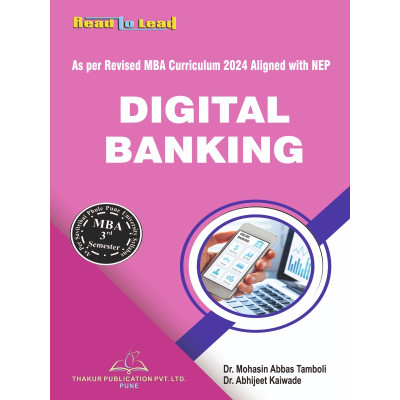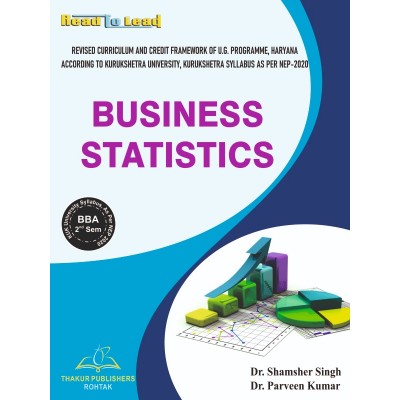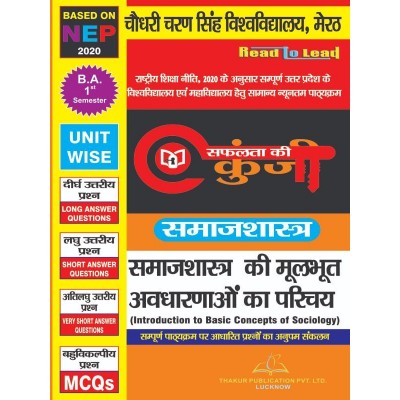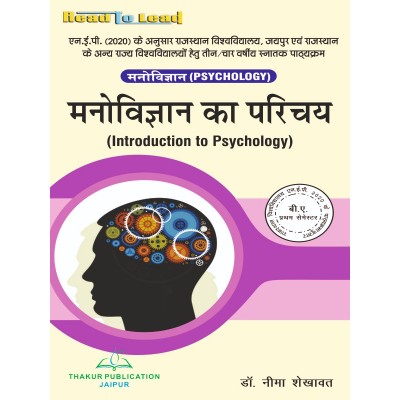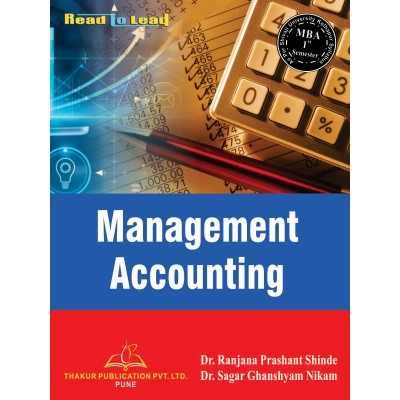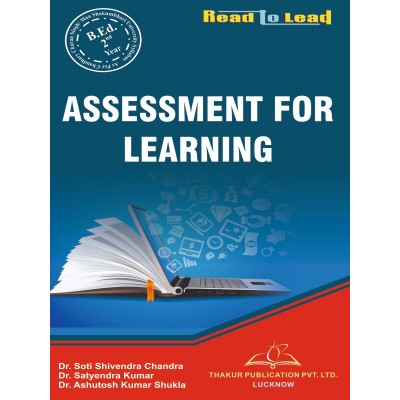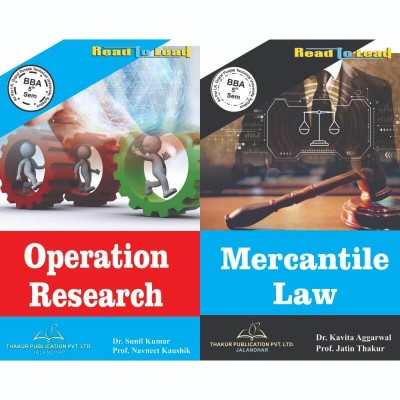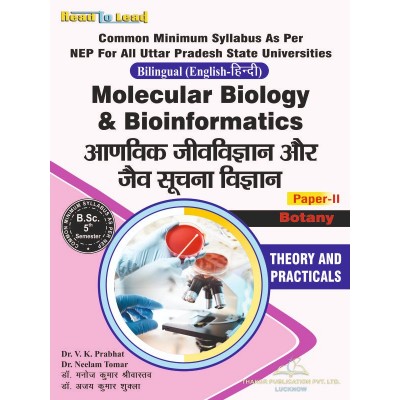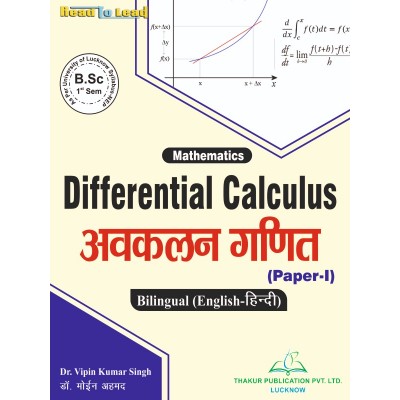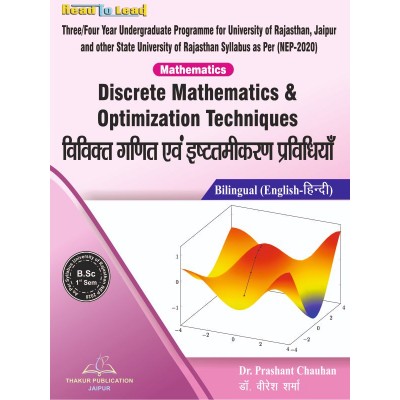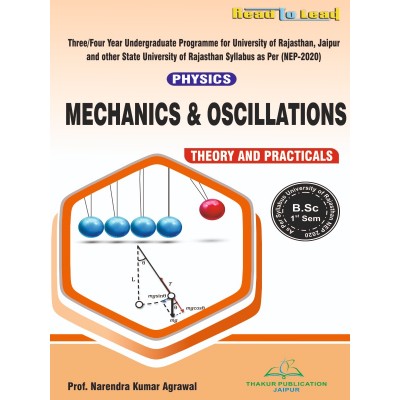Categories
- Pharmacy
-
Nursing
-
MBA
-
BBA
- U.P. State University
- Veer Bahadur Singh Purvanchal University, Jaunpur
- Chaudhary Charan Singh University, Meerut
- Dr. Bhimrao Ambedkar University, Agra
- Chhatrapati Shahu Ji Maharaj University, Kanpur
- Mahatma Jyotiba Phule Rohilkhand University, Bareilly
- Mahatma Gandhi Kashi Vidyapith, Varanasi
- Dr. Ram Manohar Lohia Avadh University, Ayodhya
- Deen Dayal Upadhyaya Gorakhpur University
- Prof. Rajendra Singh (Rajju Bhaiya) University, Prayagraj
-
BCA
- UP State Universities
- University of Pune
- I.K.Gujral Punjab Technical University (PTU)
- University of Rajasthan
- Rashtrasant Tukadoji Maharaj Nagpur University
- Uttar Pradesh NEP2020
- University of Rajasthan ,Jaipur (According to NEP-2020)
- BCCA (B. Com - Computer Science)
- Haryana
- West Bengal
- BBA (CA)
- PUNE BCA (Sci,Commerce)/B.Com (CA)
- Dr. A. P. J. Abdul Kalam Technical University, Lucknow ( AKTU )
- MCA
-
B Ed
- Lucknow University B.Ed Books
- Chaudhary Charan Singh University/Maa Shakambhari University, Saharanpur
- Dr Bhim Rao Ambedkar University, Agra
- Mahatma Gandhi Kashi Vidyapeeth, Varanasi
- Chhatrapati Shahu Ji Maharaj University
- Prof. Rajendra Singh (Rajju Bhaiya) University, Prayagraj (PRSU)
- Mahatma Jyotiba Phule Rohilkhand University(Mjpru), Bareilly
- Dr. Ram Manohar Lohia Avadh University, Ayodhya
- Bundelkhand University, Jhansi
- B.A,B.ed
- B.Sc, B.ed
- Deen Dayal Upadhyaya Gorakhpur University
- Veer Bahadur Purvanchal University (VBPU)
- Maharaja Suhel Dev State University ,Azamgarh (MSDSU)
- Raja Mahendra Pratap Singh State University, Aligarh (RMPSSU)
- Barkatullah Vishwavidyalaya (Bhopal)
- Jiwaji University (Gwalior)
- Vikram University (Ujjain)
- Dr. Harisingh Gour University (Sagar)
- Devi Ahilya Vishwavidyalaya (Indore)
- Rani Durgavati Vishwavidyalaya (Jabalpur)
- Awadhesh Pratap Singh University (Rewa)
- Maharaja Chhatrasal Bundelkhand University (Chhatarpur)
- D. EL. ED
- TET
-
B Com
-
B Sc
- B.Sc. U.P. State Universities Common Syllabus NEP
- Veer Bahadur Singh Purvanchal University, Jaunpur
- University of Lucknow
- Chaudhary Charan Singh University, Meerut
- Madhya Pradesh
- Chhatrapati Shahu Ji Maharaj University, Kanpur
- Dr. Bhimrao Ambedkar University, Agra
- Mahatma Gandhi Kashi Vidyapith, Varanasi
- DEEN DAYAL UPADHYAYA GORAKHPUR UNIVERSITY
- Prof. Rajendra Singh (Rajju Bhaiya) University, Prayagraj
- Dr. Ram Manohar Lohia Avadh University, Ayodhya
- Mahatma Jyotiba Phule Rohilkhand University, Bareilly
- Uttarakhand State Universities
- B.Sc. Bihar Universities Common Syllabus NEP
- University of Rajasthan (Jaipur)
- Haryana
-
Bachelor of Arts [B.A.]
- B.A. Of U.P. State Universities Common Syllabus NEP
- Veer Bahadur Singh Purvanchal University, Jaunpur
- University of Lucknow
- Chaudhary Charan Singh University, Meerut
- Chhatrapati Shahu Ji Maharaj University, Kanpur
- Dr. Bhimrao Ambedkar University, Agra
- Mahatma Gandhi Kashi Vidyapith, Varanasi
- Deen Dayal Upadhyaya Gorakhpur University
- Prof. Rajendra Singh (Rajju Bhaiya) University, Prayagraj
- Dr. Ram Manohar Lohia Avadh University, Ayodhya
- Mahatma Jyotiba Phule Rohilkhand University, Bareilly
- Madhya Pradesh
- Uttarakhand
- Bihar
- University of Rajasthan (Jaipur Syllabus as Per NEP2020)
- Haryana NEP-2020
- B Tech
- LLB
- SWA Education
(Chemistry) Structure -Bonding , Mathematical Concept and States of Matter UOR B.SC First Sem
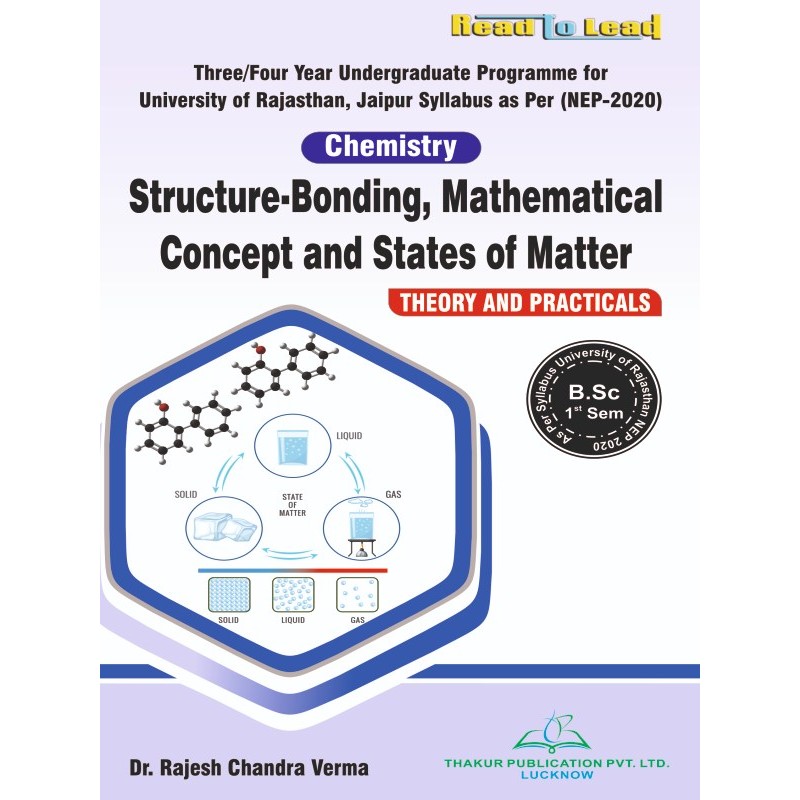
Click below to Buy E-Book Edition:
Buy Latest Structure-Bonding, Mathematical Concept and States of Matter (Chemistry) Book in English Language for B.Sc 1st Semester University of Rajasthan, Jaipur NEP-2020 By Thakur publication.
AUTHORS : Dr. Rajesh Chandra Verma
ISBN : 9789357558938
₹300.00
Tax excluded
Click below to Buy E-Book Edition:
Buy Latest Structure-Bonding, Mathematical Concept and States of Matter (Chemistry) Book in English Language for B.Sc 1st Semester University of Rajasthan, Jaipur NEP-2020 By Thakur publication.
AUTHORS : Dr. Rajesh Chandra Verma
ISBN : 9789357558938
Syllabus
Course Code: CHM-51T-101
Structure-Bonding, Mathematical Concept and States of Matter
Unit-I
Ionic Solids: General characteristics of ionic bonding, Ionic structures, radius ratio effect and coordination number, limitation of radius ratio rule, Lattice enthalpy and Born-Lande equation for calculation of Lattice Enthalpy (no derivation), Born-Haber cycle and its applications, Solvation enthalpy and solubility of ionic solids, polarizing power and polarizability, Fajan’s rule, Lattice defects, semiconductors.
Metallic Bond: Free electron, valence bond and bond theories.
Weak Interactions: Hydrogen bonding, Van der Waals forces.
Unit-II
Covalent Bond: Valence bond theory and its limitations, Directional character, Hybridization. Valence shell electron pair repulsion (VSEPR) theory to NH3, H3O+, SF4, CIF3, , H2O.
Molecular Orbital Theory: LCAO method, bonding, nonbonding and anti-bonding MOs and their characteristics for combinations of atomic orbitals, MO treatment of homonuclear and heteronuclear (CO and NO) diatomic molecules. Comparison of VB and MO approaches.
Multicenter bonding in electron deficient molecules, bond strength and bond energy, ionic character in covalent compounds, calculation of percentage ionic character from dipole moment and electronegativity difference.
Unit-III
Mathematical Concepts: Logarithmic relations, curve sketching, linear graphs and calculations of slopes, differentiation of functions like kx, ex, xn, sinx and log x; maxima and minima, partial differentiation and reciprocity relations, integration of some useful/relevant functions; permutations and combinations, factorials, probability, Matrices and Determinant.
Liquid State: Intermolecular forces, structure of liquids (a qualitative description). Structural differences between solids, liquids and gases, Liquid crystals: Difference between liquid crystal, solid and liquid.
Solid State: Definition of space lattice, unit cell.
Laws of crystallography- (i) Law of constancy of interfacial angles (ii) Law of rationality of indices (iii) Law of symmetry, Symmetry elements in crystals.
Basic concept of X-ray diffraction by crystals. Derivation of Bragg’s equation, Determination of crystal structure of NaCl and CaCl (Laue’s method and powder method), Defects in solids.
Unit-IV
Gaseous State: Postulates of kinetic theory of gases, deviation from ideal behavior, van der Waals equation of state.
Critical Phenomenon: PV isotherms of real gases, continuity of states, the isotherms of van der Waals equation, relationship between critical constants and van der Waals constants, the law of corresponding states, reduced equation of state.
Molecular Velocities: Root mean square, average and most probable velocities. Qualitative discussion of the Maxwell’s distribution of molecular velocities, collision number, Mean free path and collision diameter, Liquification of gases (based on Joule-Thomson effect).
Colloidal State: Definition of colloids, classification of colloids.
Solids in liquids (sols): properties-kinetic, optical and electrical, stability of colloids, Protective action, Hardy-Schulze law, gold number.
Liquid in solids (gels): classification, preparation and properties, inhibition, general applications of colloids.
Liquids in liquids (emulsions): types of emulsions, preparation, Emulsifier.
Chemistry Lab
Organic Chemistry
Laboratory Techniques 3 marks
a) Determination of melting point (naphthalene, benzoic acid, urea, etc.); boiling point (methanol, ethanol, cyclohexane, etc.): mixed melting point (urea-cinnamic acid, etc.).
b) Crystallization of phthalic acid and benzoic acid from hot water, acetanilide from boiling water, naphthalene from ethanol etc.; Sublimation of naphthalene, camphor etc.
Qualitative Analysis 7 marks
Identification of functional groups (unsaturation, phenolic, alcoholic, carboxylic, carbonyl, ester, carbohydrate, amine, amide, nitro and hydrocarbon) in simple organic compounds (solids or liquids) through element detection (N.S and halogens)
Physical Chemistry
Viscosity and Surface Tension: 10 marks
a) To determine the viscosity/surface tension of a pure liquid (alcohol etc.) at room temperature. (Using the Ostwald viscometer/stalagmometer).
b) To determine the percentage composition of a given binary mixture (acetone and ethyl methyl ketone) by surface tension method.
c) To determine the percentage composition of a given mixture (non-interacting systems) by viscosity method.
d) To determine the viscosity of amyl alcohol in water at different concentration and calculate the excess viscosity of these solutions.
UOR NEP2020/B.SC (English)/1/03
49 Items
New
16 other products in the same category:
Comments (0)
No customer reviews for the moment.
Your review appreciation cannot be sent
Report comment
Are you sure that you want to report this comment?
Report sent
Your report has been submitted and will be considered by a moderator.
Your report cannot be sent
Write your review
Review sent
Your comment has been submitted and will be available once approved by a moderator.
Your review cannot be sent
Viewed products
Customers who bought this product also bought:
Chemistry Book B.Sc 3rd...
Price
₹380.00
Buy Latest (Chemistry) Chemistry of s, p-block Elements and Noble Gases, Non-aqueous Solvent Chemistry, Hydrocarbons and Alkyl Halide,...
Discrete Mathematics &...
Price
₹400.00
Click below to Buy E-Book Edition:
₹ 240 E-BOOK GOOGLE PLAY
Buy Latest ( Mathematics ) Discrete Mathematics & Optimization...
Mechanics & Oscillations (...
Price
₹290.00
Click below to Buy E-Book Edition:
₹ 175 E-BOOK GOOGLE PLAY
Buy Latest Mechanics & Oscillations ( Physics ) Book in English...









